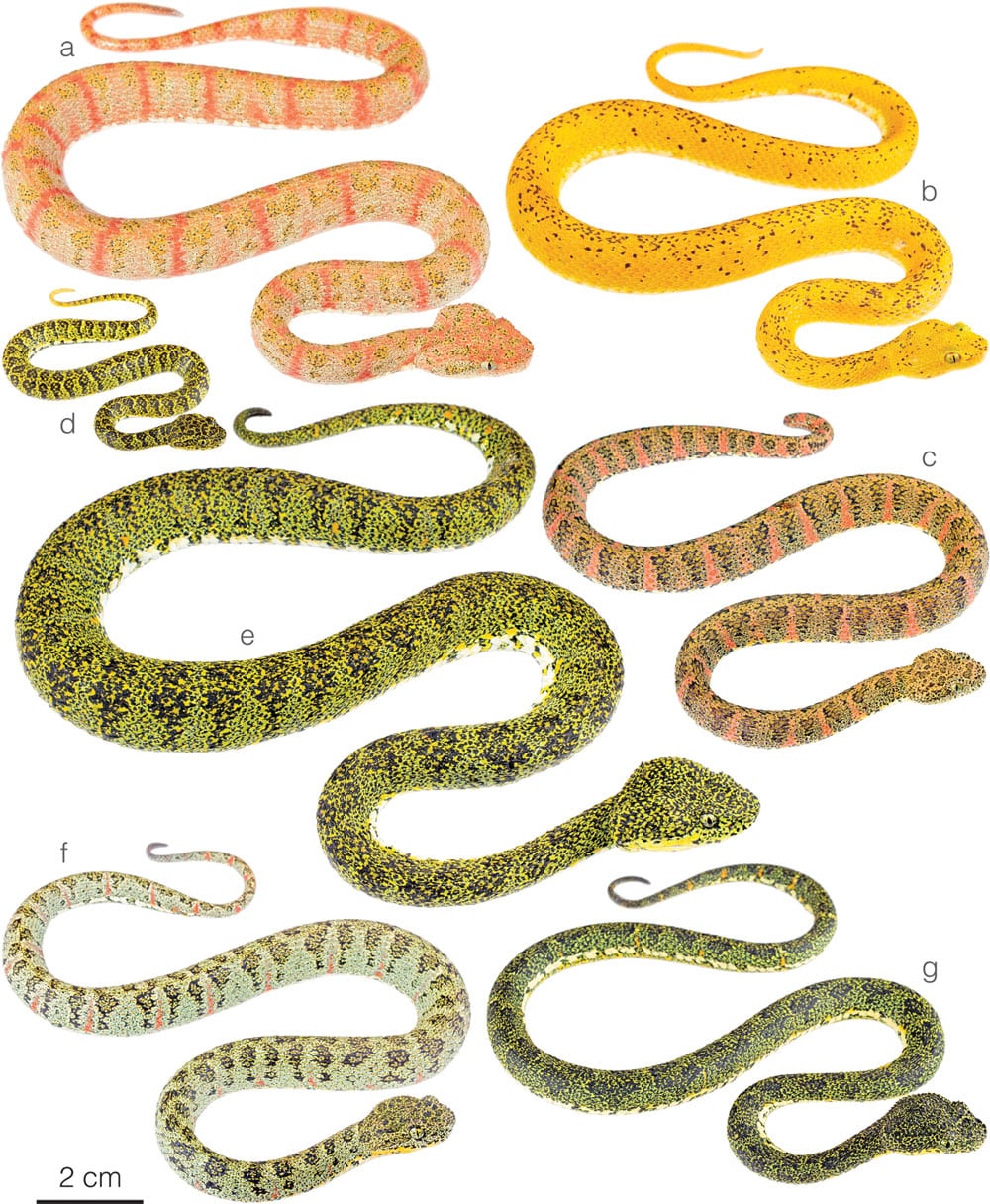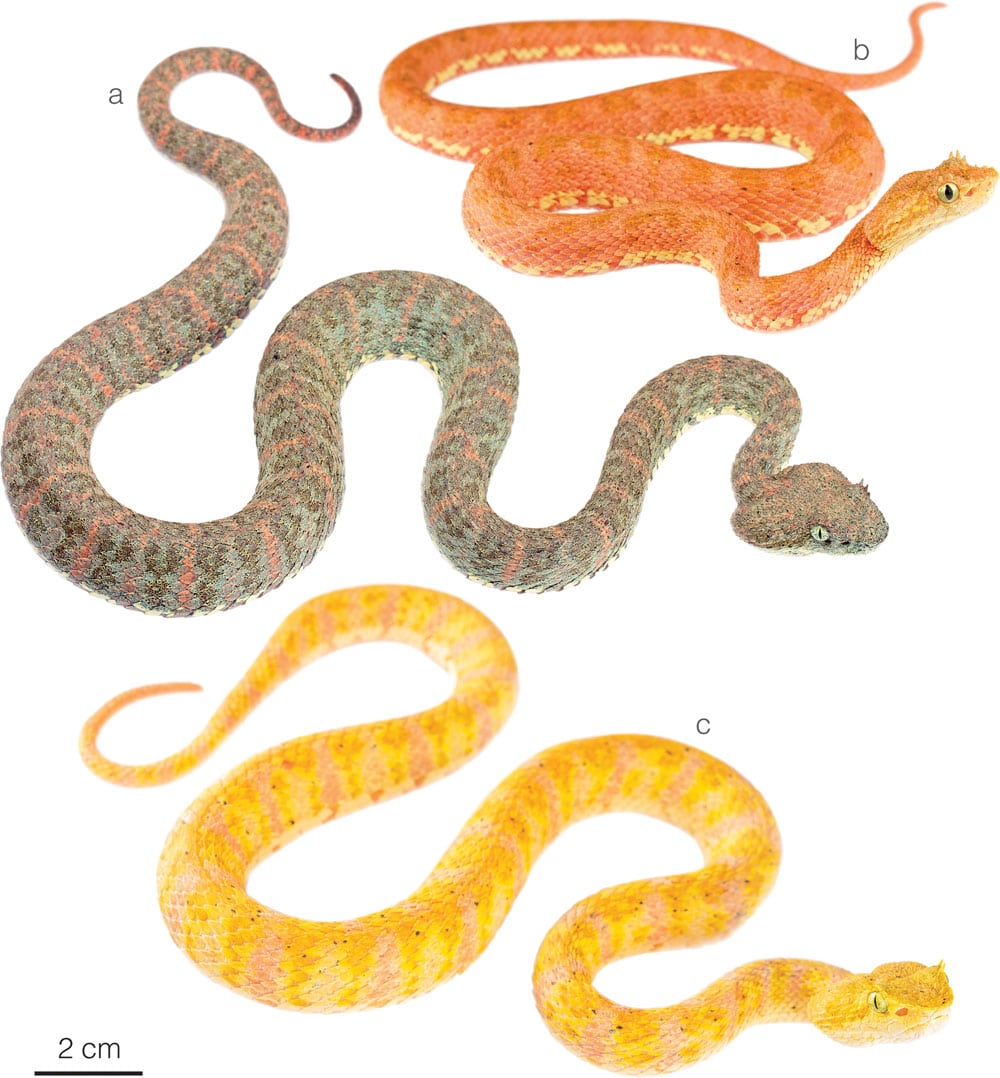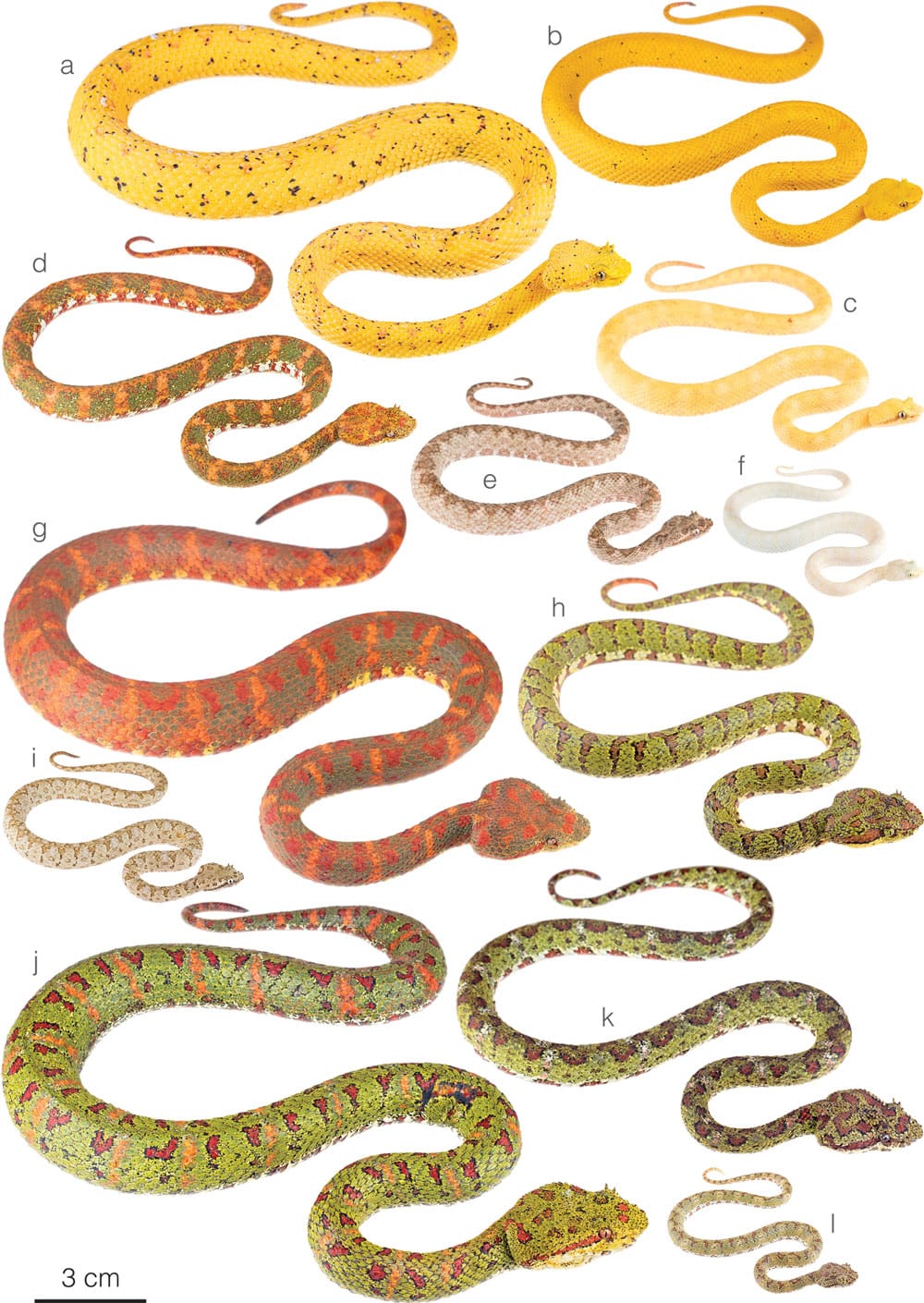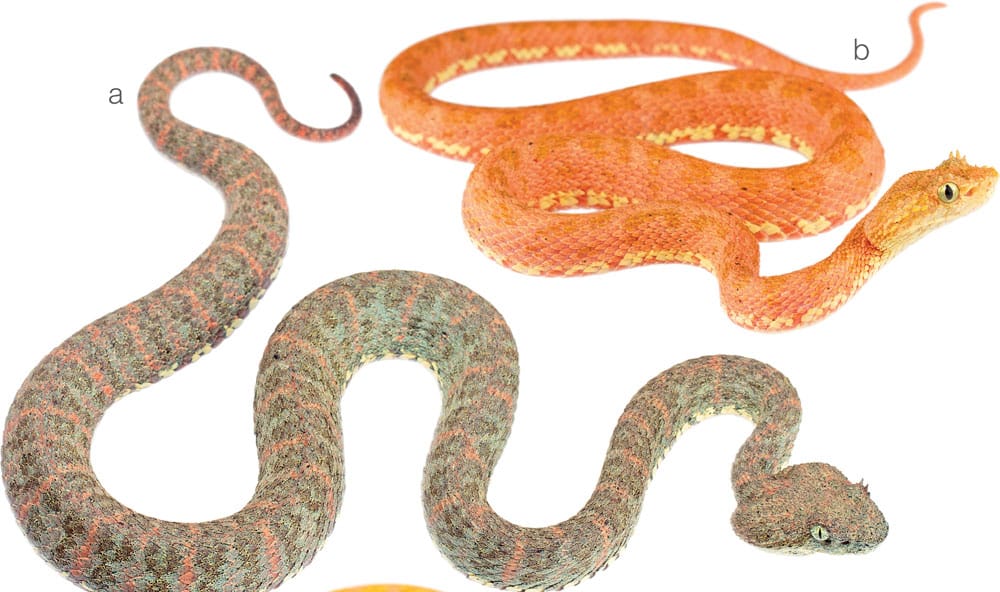The researchers include Alejandro Arteaga, R. Alexander Pyron, Abel Batista, Jose Vieira, Elson Meneses Pelayo, Eric N. Smith, César L. Barrio Amorós, Claudia Koch, Stefanie Agne, Jorge H. Valencia, Lucas Bustamante, Kyle J. Harris
Researchers studying the eyelash palm-pitviper (Bothriechis schlegelii) have determined through a taxonomic and systematic review, that the species is actually five different species. They came to this conclusion by studying 400 museum specimens and conducted a “phylogeographic analysis of 818 locality records, and 80 individuals sampled for molecular characters.”

Photographs of living specimens of Bothriechis hussaini sp. nov. from Ecuador. a. CZ-003 adult female from El Colorado, El Oro province; b. CZ-001 adult male from El Colorado, El Oro province; c. CZ-004 adult male from San Carlos, Guayas province; d. ZSFQ 5058 juvenile female from Buenaventura Biological Reserve, El Oro province; e. AMARU SN adult female Buenaventura Biological Reserve, El Oro province; f. subadult of undetermined sex from Buenaventura Biological Reserve, El Oro province; g. ZSFQ 5056 adult male holotype from Buenaventura Biological Reserve, El Oro province. Photos by Alejandro Arteaga and Jose Vieira
In addition to Bothriechis schlegelii, which the researchers also have redescribed, the new species are B. klebbai sp. nov., B. rasikusumorum sp. nov., B. khwargi sp. nov., B. rahimi sp. nov., and B. hussaini sp. nov. The researchers also have revised the names of B. nigroadspersus, B. nitidus, and B. torvus.

Photographs of living specimens of Bothriechis rahimi sp. nov. from Tundaloma Lodge, Esmeraldas province, Ecuador. a. Adult female; b. MZUTI 3325 adult male; and c. ZSFQ 5053 adult female. Photos by Lucas Bustamante, Alejandro Arteaga, and Frank Pichardo.
“A total of 279 DNA sequences were used to build a phylogenetic tree of the genus Bothriechis, of which 206 were generated during this work and 73 were downloaded from GenBank,” the researchers wrote in their paper. The researchers also built distribution maps and ecological niche models to determine the ranges of the 10 species of snakes in the Bothriechis genus.

Photographs of some specimens of Bothriechis nigroadspersus in life. a. Adult female from a private collection in Costa Rica; b. MHCH 3269 adult from Guabito, Bocas del Toro province, Panama; c. Subadult from Parque Nacional Gandoca Manzanillo, Limón province, Costa Rica; d. Adult from a private collection in Costa Rica; e, f. Juveniles from Parque Nacional Gandoca Manzanillo, Limón province, Costa Rica; g. MHCH 3268 adult female from Portón, Chiriquí province, Panama; h. MHCH 3266 adult female from Chucantí Reserve, Darién province, Panama; i. Subadult from Parque Nacional Gandoca Manzanillo, Limón province, Costa Rica; j. Adult female from a private collection in Costa Rica; k. FP 001 from Cerro Gaital, Coclé province, Panama; l. MHCH 3267 juvenile male from Chucantí Reserve, Darién province, Panama. Photos by Jose Vieira.
Geographic Ranges of Bothriechis sp.
The geographic ranges of each new species seems to vary. One new species can be found in the lowlands and mid elevations of the Cordillera Oriental mountains of Colombia. A second species occurs on the western slopes of the same mountains in the highlands, while a third occurs primarily in Ecuador. A fourth species is knowns to occur only in the Chocoan lowlands of southwestern Colombia, next to northwester Ecuador, while the fifth species can be found in dryer ecosystems between the Choco and Tumbes biogeographic regions os southwestern Ecuador and northwestern Peru.
Palm Pit Vipers Of The Genus Bothriechis
The researchers include Alejandro Arteaga, R. Alexander Pyron, Abel Batista, Jose Vieira, Elson Meneses Pelayo, Eric N. Smith, César L. Barrio Amorós, Claudia Koch, Stefanie Agne, Jorge H. Valencia, Lucas Bustamante, Kyle J. Harris
The complete paper, “Systematic revision of the Eyelash Palm-Pitviper Bothriechis schlegelii (Serpentes, Viperidae), with the description of five new species and revalidation of three” and data can be read on the Evolutionary Systematics website.


